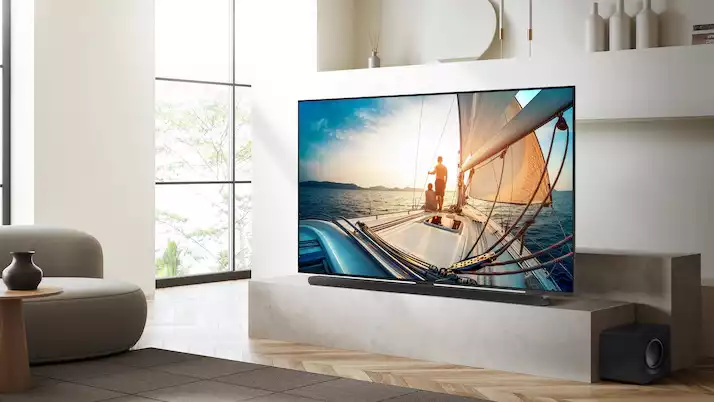The best TVs are constantly being improved by new display technologies. And one of the most impactful new display technologies is probably the quantum dot filter. It reproduces colors more accurately from more viewing angles and can be added to the best OLED TVs as well as traditional LED-LCD TVs.
However, there is a more advanced version of this quantum dot technology called NanoLED. NanoLED takes these quantum dots out of the equation and instead allows the quantum dots to be directly electrified by the TV.
Although it sounds like a technology for the distant future, new reports indicate that NanoLED TVs will become a reality sooner than expected: Nanosys, the company behind quantum dot technology, was recently acquired by Shoei Chemical of Japan (h/t FlatpanelsHD). Prior to this acquisition, Nanosys had set a launch date of 2025/2026 for the first NanoLED TVs, but after the acquisition, Jeff Yurek, VP of Marketing at Nanosys, said, "Shoei is committed to the future of quantum dot technology, and as part of Shoei, we are excited about NanoLED's We are excited to accelerate progress."
In other words, he expects it to be released in 2024 or 2025. [If you have seen the terms QLED, QNED, Quantum, miniLED, or QD-OLED when buying a TV, these terms refer to TVs that use quantum dot filters. This is the extent of quantum dot technology in mainstream displays today.
The way it works is that light is emitted from the blue light LED backlight or, in the case of QD-OLED TVs, from the red, green, and blue (and sometimes white) OLED sub-pixels. This light passes through a display layer of quantum dots, which reproduce colors according to the width of the dots. According to [Nanosys, quantum dots 7 nanometers wide convert light into red, dots 5 nanometers wide convert light into green, and dots 3 nanometers wide convert light into blue. This process is known as photoluminescence because it requires light from an LED or OLED to stimulate the quantum dots.
However, NanoLEDs completely eliminate the need for the first photon. Instead, the quantum dots are directly stimulated by electricity in a process known as electroluminescence. In theory, this has several advantages. The biggest is improved peak brightness; Nanosys states that NanoLEDs can achieve peak brightness in excess of 600,000 nits, but my assessment is that mainstream NanoLED TVs are likely to fall short of this figure.
However, NanoLEDs may also offer cost savings for display manufacturers wishing to achieve high levels of peak brightness. MicroLEDs are currently one of the main technologies focused on this issue, and Nanosys is working on quantum dot filters for microLED displays. The least expensive microLED TVs cost nearly $100,000, largely because even one mistake in assembling the microLEDs in a microLED display renders the display useless and significantly reduces yield.
Nanosys' workaround to this problem is to use a solution-based process, similar to what is being attempted with inkjet TV displays. This should result in a manufacturing process that is cheaper and less susceptible to yield loss. They also state that the process should be able to transform any surface into a nano-LED display, which is currently a major selling point for naturally flexible OLEDs.
To be clear, this technology is still many years away, and any release window is only a prediction at this stage, but if Nanosys is successful, it could be a major leap forward for TV displays.










Comments